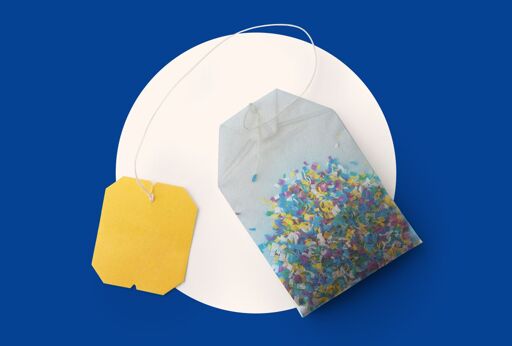Summary
A new study from Spain’s Autonomous University of Barcelona reveals that tea bags made from nylon, polypropylene, and cellulose release billions of micro- and nanoplastic particles when steeped in boiling water.
These particles, which can enter human intestinal cells, may pose health risks, potentially affecting the digestive, respiratory, endocrine, and immune systems.
Researchers urge regulatory action to mitigate plastic contamination in food packaging.
Consumers are advised to use loose-leaf tea with stainless steel infusers or biodegradable tea bags to minimize exposure.



They report their findings as particles/ml, not particles/teabag. It should be obvious to you, as a scientist, that the particles/ml evolved given 1 teabag in 350ml of water will be massively different from the particles evolved with 1 teabag per 2ml of water.
.
I’m not totally sure what you mean by “get out more or less of the dissolved particles”, but I think I understand where your confusion lies. You keep referring to quantities, i.e. mass or particle counts. Their data is reporting these things as concentrations.
It should be obvious to you that 7.14g of salt dissolved in 2ml of water will produce a highly concentrated solution (saturated, in fact), whereas the same 7.14g dissolved in 350ml of water will produce a dilute solution. The concentration of the first one is 3.57g/ml, but the concentration of the second is 0.0204g/ml.
If somebody then turns around and says that 7.14g of salt dissolved in a mug of water will produce a concentration of 3.57g/ml, it should be readily apparent that they are incorrect. That is in effect what the authors are saying by reporting their results as particles/ml and then saying that those numbers are representative of what you might expect when brewing tea under normal conditions.
Does that all make sense?
.
In a sense, but clarity of language can be the difference between accurate conclusions and misrepresentation. Just on data presentation alone, formal issuance of a correction is absolutely necessary.
Following on from that is where the issues with study design and methodology come in, and in my opinion they are both so flawed as to lead to spurious conclusions.
The other major problems I see so far:
as mentioned previously, their brewing methodology is so different from what would be done under normal conditions/at home that comparison between the two is meaningless. A good paper should discuss these differences and explain why some conclusions can still be drawn, but this one just makes a direct comparison.
the authors used empty mesh sleeves from an unnamed aliexpress vendor for their samples. We have no idea whether these sleeves are in use by any tea manufacturer, we don’t know anything about how they were made, and we don’t even know whether they were intended for food usage.
one of the three samples produced only cellulose particles, which a) isn’t a plastic and b) is a component of plant cell walls. I don’t know the cellulose particle concentration in a kale smoothie, but I’m certain that it’s higher. And yet the authors still just report this figure alongside the others.
Ultimately, the only thing this paper demonstrates is that certain types of thin-fibre plastic will, when handled roughly, shed nanoparticles. This isn’t a new conclusion, and doesn’t provide us with anything actionable with respect to our tea drinking habits.
.
You should know that critical methodological issues were reported with Hernandez, viz. they failed to discriminate particle identity. A recreation of their experiment demonstrated that the vast majority/virtually all of the particles were actually soluble oligomers that were subsequently crystallized by their preparation technique, i.e. not microplastics.
Your reading of their paper is extremely generous, but I’m not sure where you get the idea that analysis of the interaction between microplastics and endothelial cells is novel; the citations in this paper alone should be enough to tell you otherwise. The sole novelty of this paper is in drawing a link between existing studies on cell interaction and real-world situations, which is evident right from the title: “Teabag-derived micro/nanoplastics as a surrogate for real-life exposure scenarios”.
There may well be further room for experimentation in this arena, but this paper falls flat. Their methodology is so far off anything that could be described as “real-world” that it is spurious to draw any subsequent conclusions.
.
Ok, it’s evident that reading papers of this sort is perhaps new-ish territory for you, but I sincerely commend your curiosity.
To whit: if you read the Results and Discussion section of Banaei, you will find at least 5 inline citations that refer to other papers that have investigated plastic microparticle interaction with intestinal cells going all the way back to 2004, and multiple other papers discussing microparticle interaction with other cell types. What this paper does is absolutely not novel. It isn’t necessarily worthless, but it is very much not new.
Per the methodological issues with Hernandez, there is a formalized process in scientific publishing for ensuring that critical discourse about a paper is presented alongside the original work. If you search for Hernandez (or any other paper) in PubMed and scroll down past the abstract, you’ll find related articles. If there are any formal comments/critiques/corrections, those will be listed first with a different subheading.